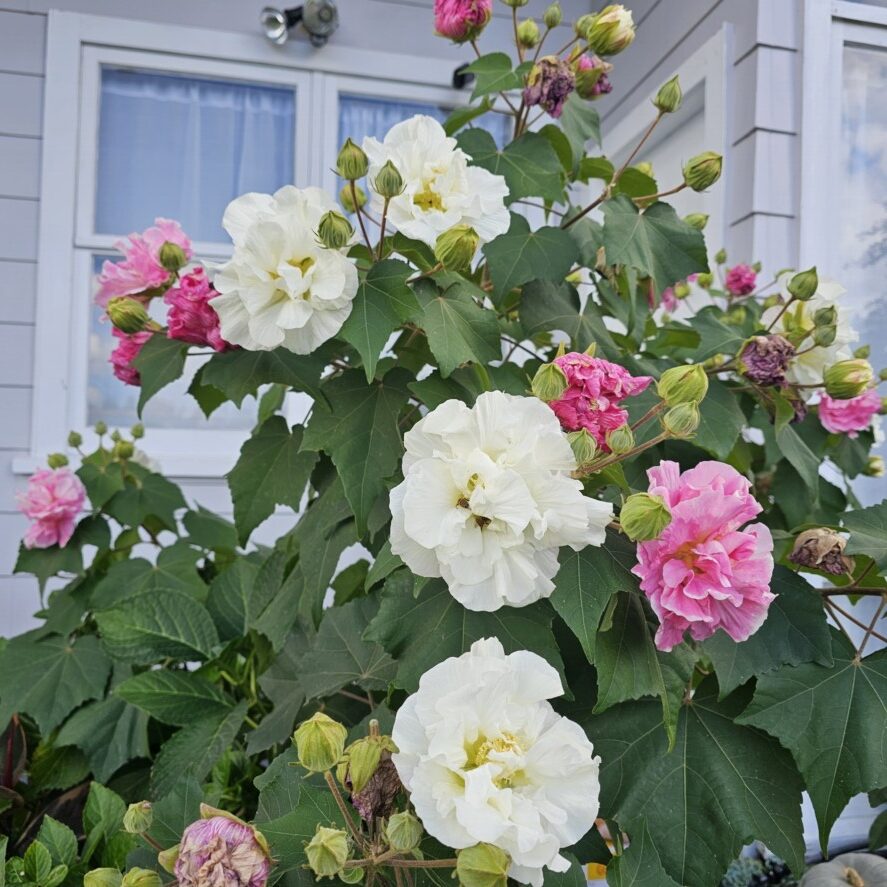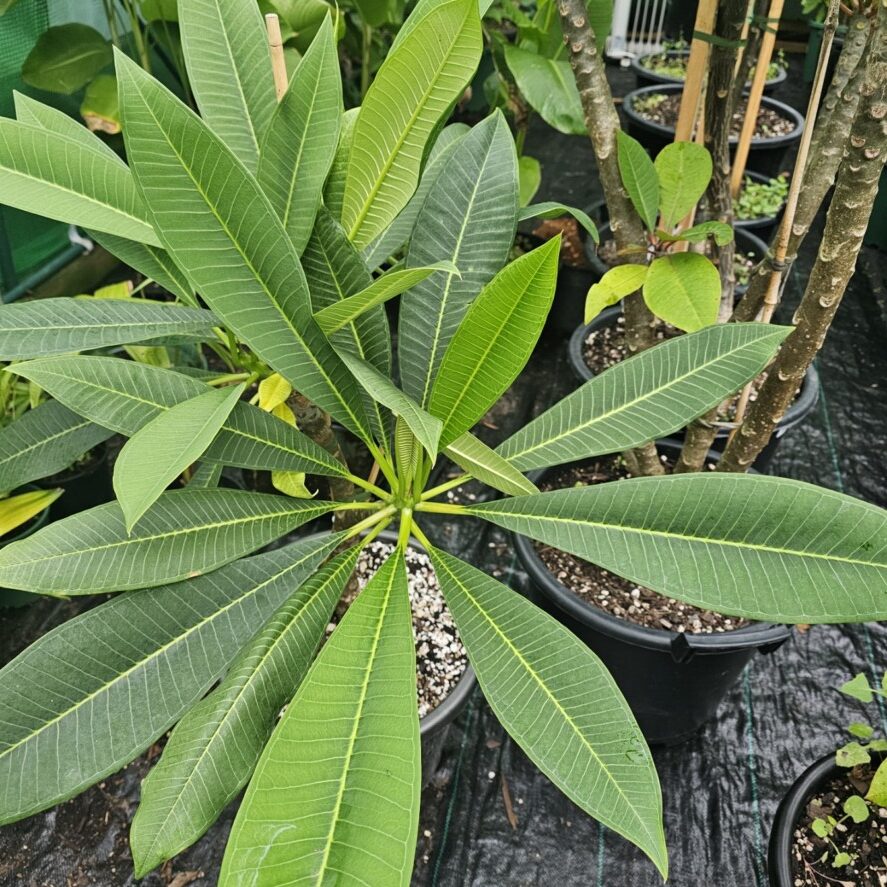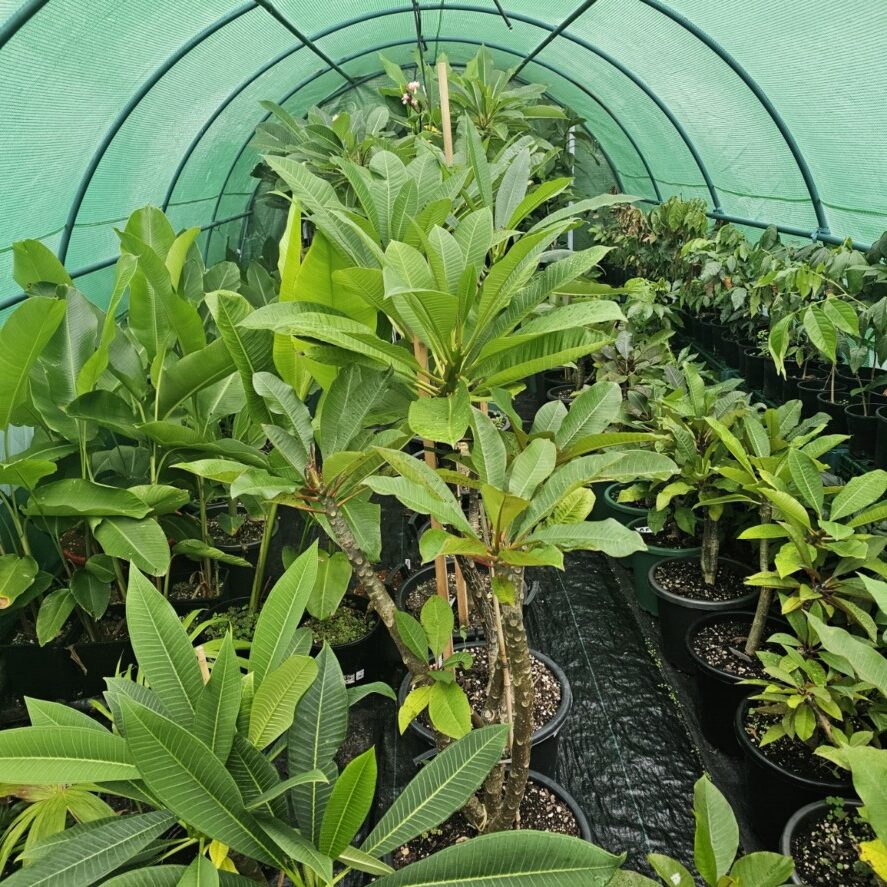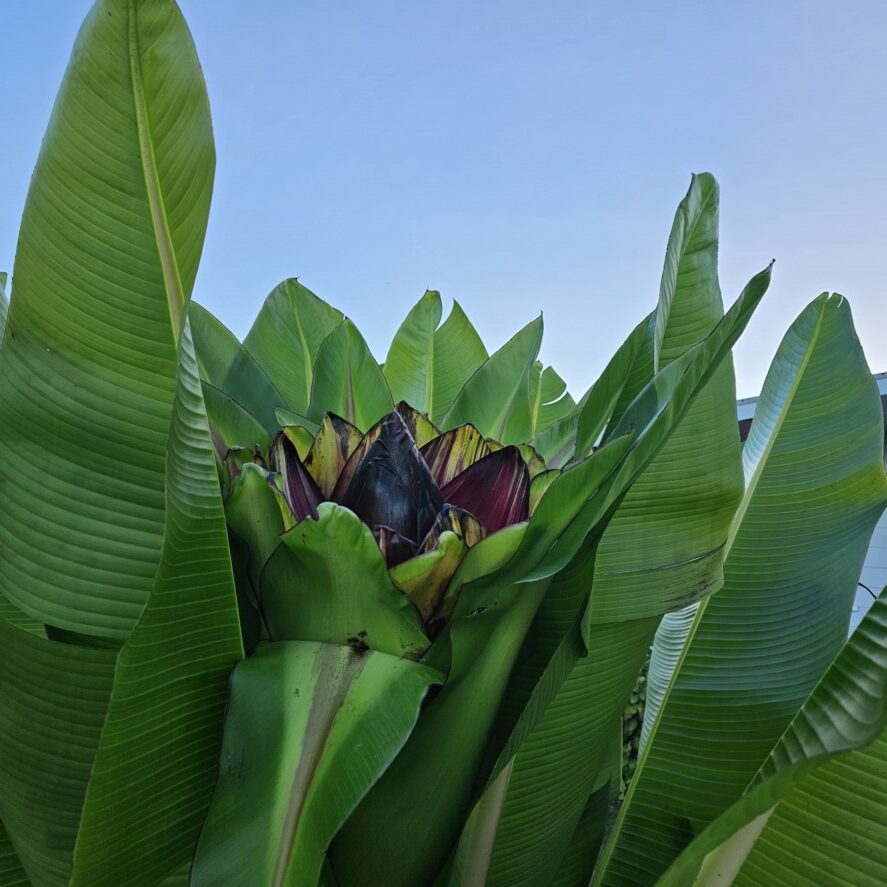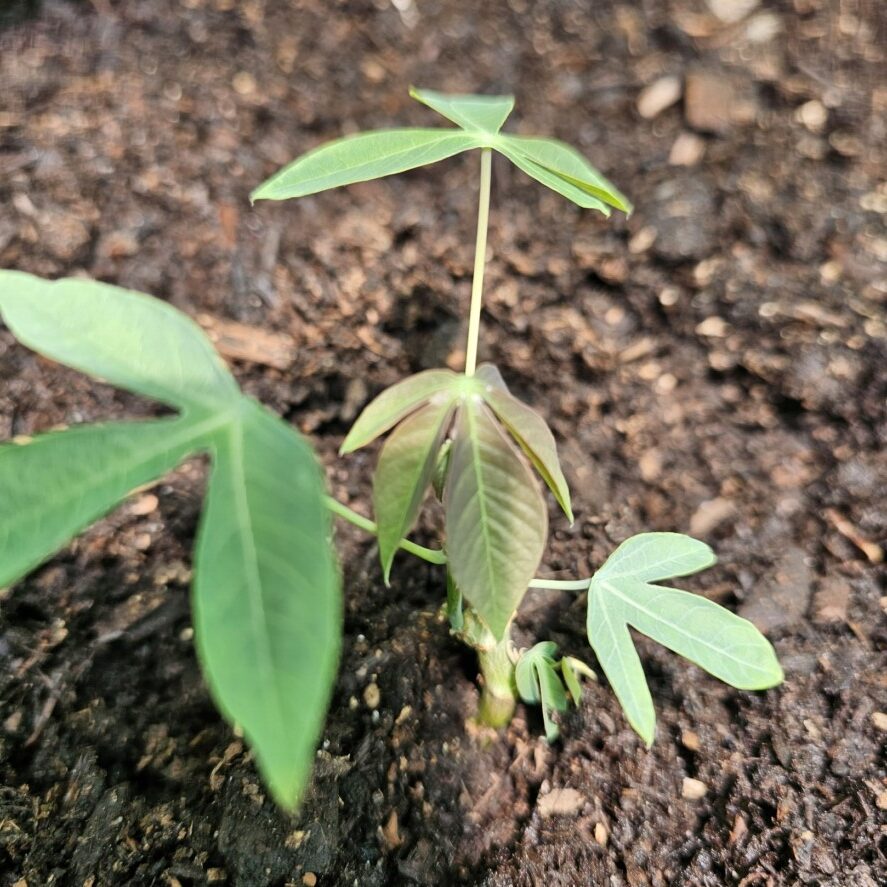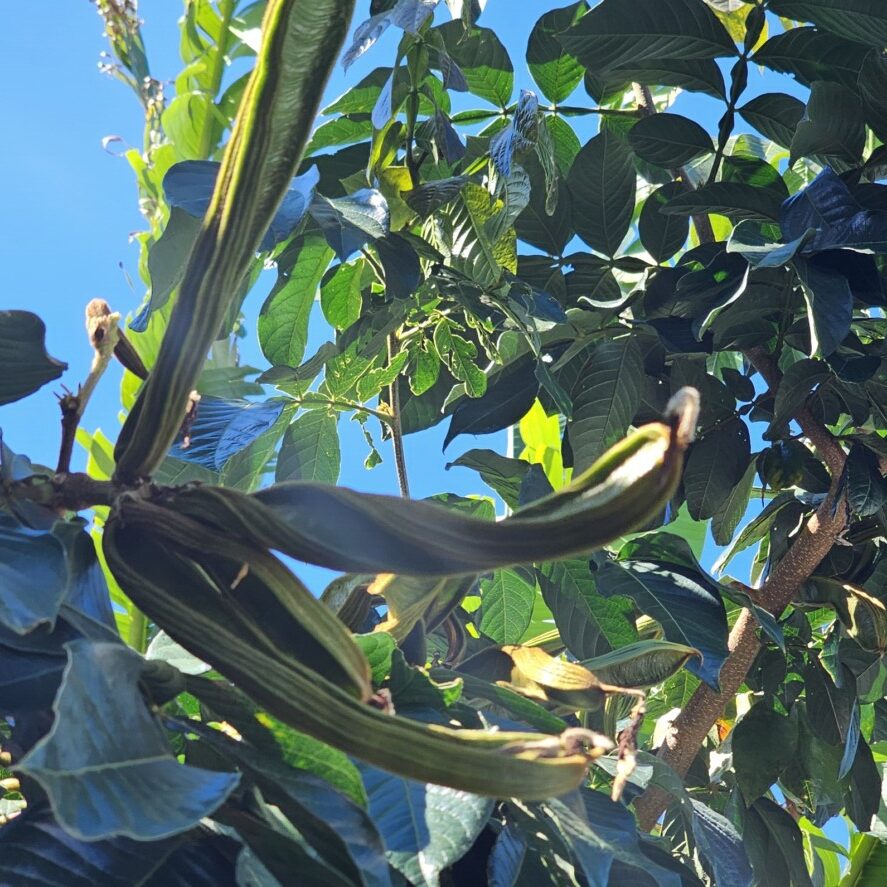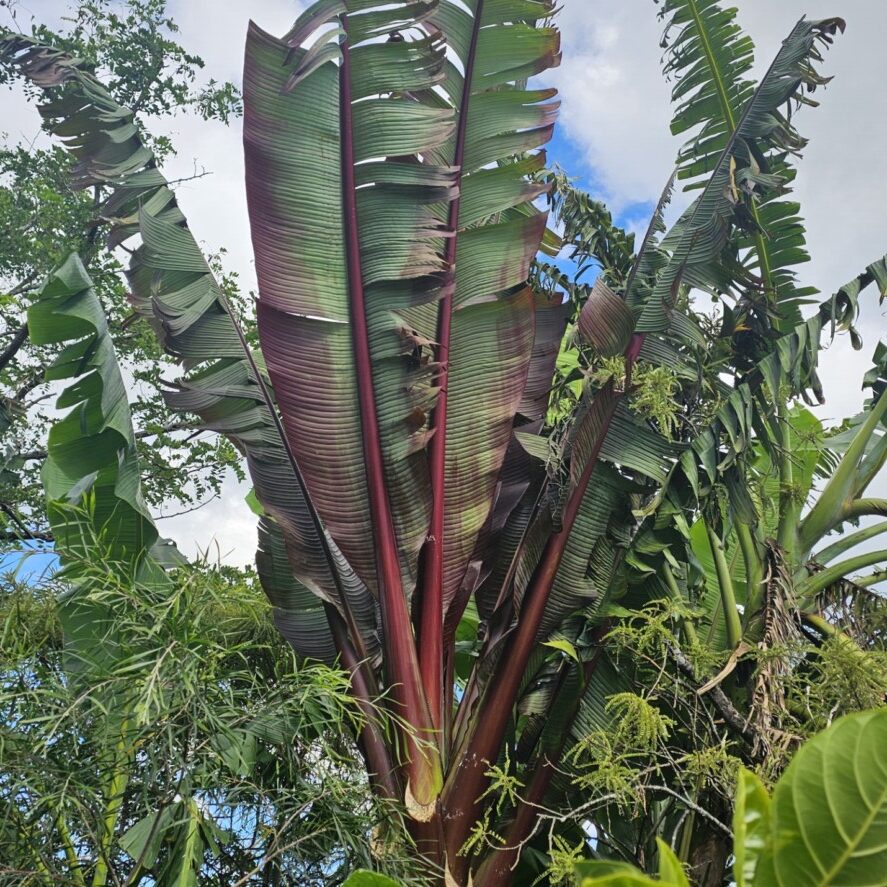-
Troppo Plant & Garden Articles
- Te Puke Region
- TROPPO’s Food Forest in Te Puke, BOP (www,foodforest.org.nz)
- Troppo’s Plant Collection
- TROPPO's Nursery Directory
- Food Forests of New Zealand (www.foodforests.nz)
- Nursery Map - Plant Suppliers of NZ Directory (www.nurserymap.nz)
- Kids Garden Corner
- New Zealand Garden Bird Survey
- New Zealand Garden Groups
- Delicious Recipes
Colocasia esculenta ‘Pharaoh’s Mask’ – A Statement Plant for Your Garden
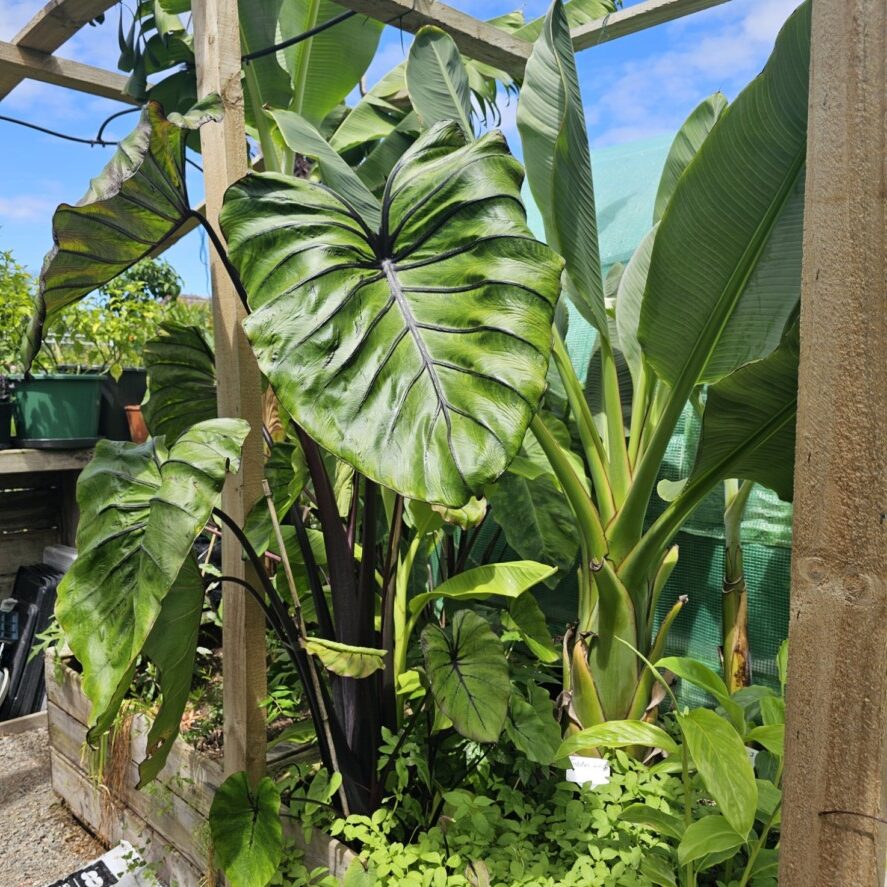
Few plants command attention quite like Colocasia esculenta ‘Pharaoh’s Mask’. This striking elephant ear variety boasts deep green, heavily veined leaves with dark, almost black ridges that create a dramatic, sculptural effect. The veins protrude outward, making the foliage appear almost three-dimensional. Native to tropical and subtropical regions, this cultivar is prized for its exotic appearance and vigorous growth, making it a must-have for collectors and garden enthusiasts alike.
Growing ‘Pharaoh’s Mask’ Outdoors in New Zealand
New Zealand’s temperate climate offers both opportunities and challenges for growing Colocasia esculenta outdoors, especially in areas that experience cooler winters. In warm, frost-free regions such as the Bay of Plenty, these plants can thrive year-round with minimal intervention. However, in colder climates, some winter care strategies are essential to ensure their survival.
Winter Considerations
One of the biggest challenges for Colocasia varieties in New Zealand is winter frost. ‘Pharaoh’s Mask’ prefers consistently warm temperatures and high humidity, both of which can be difficult to maintain during the colder months. In areas prone to frost, such as inland regions or higher altitudes, extra protection is needed:
- Mulching: Applying a thick layer of organic mulch around the base of the plant helps insulate the tubers from freezing temperatures.
- Overwintering Indoors: For those in colder areas, lifting the tubers and storing them in a cool, dry place until spring is an effective way to prevent frost damage.
- Greenhouse or Tunnel Protection: Using a greenhouse or plastic tunnel can extend the growing season and protect plants from temperature drops.
- Microclimate Selection: Planting in a sheltered position, such as near a north-facing wall or under the canopy of larger trees, can create a more stable environment for growth.
Thriving in Kiwifruit Bins – Raised Beds in Te Puke
In Te Puke, Bay of Plenty, ‘Pharaoh’s Mask’ is thriving in a unique setup—raised beds made from repurposed kiwifruit bins. These large, sturdy containers provide excellent growing conditions by offering deep, well-draining soil while retaining warmth and moisture. The benefits of growing Colocasia in kiwifruit bins include:
- Improved Drainage: Elephant ears prefer consistently moist soil but dislike waterlogging. The raised beds allow for controlled drainage, preventing root rot.
- Heat Retention: The soil in raised bins warms up faster in spring, encouraging early growth and extending the growing season.
- Ease of Maintenance: Having plants at an elevated height reduces the need for bending down, making care and harvesting more manageable.
- Pest Control: The height of the bins helps reduce the risk of some ground-dwelling pests affecting the plants.
Why Grow ‘Pharaoh’s Mask’?
Beyond its dramatic visual appeal, Colocasia esculenta ‘Pharaoh’s Mask’ is a conversation starter and a unique addition to any garden. Whether used in tropical-themed landscapes, as a striking specimen plant, or in a dedicated edible garden (as some Colocasia varieties are grown for their edible tubers), this cultivar brings a bold and exotic flair to any setting.
For those in New Zealand looking to experiment with rare and stunning foliage, ‘Pharaoh’s Mask’ is a rewarding plant that, with the right care, can flourish even in challenging climates. And with the innovative use of kiwifruit bins as raised beds in Te Puke, it’s clear that creative growing solutions can lead to spectacular results.




